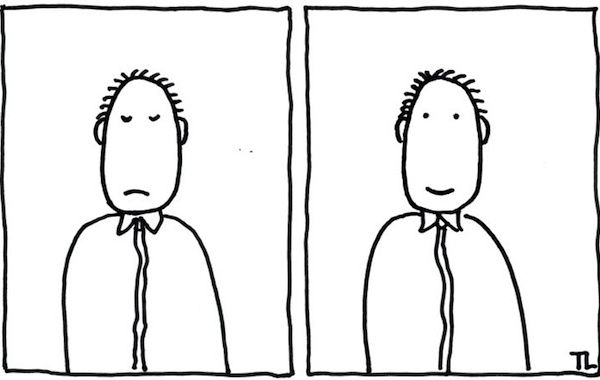Moving from Fear to Leverage in Business

We shook hands. Ryan looked down, shuffled his feet and said, “Thanks for coming. I’ve reserved a conference room…” and off we went.
He seemed uncomfortable and I wondered what was up. I knew he was just six months into the CMO position, and had moved his family cross-country to take the job.
As we walked through the office I noticed empty workspaces. A bad sign, but I reminded myself that it could mean anything: a client session, training offsite, whatever – not that business was off.
Ryan had asked me to help him get consensus on a brand design program. Partners typically manage large firms of lawyers, accountants, engineers and designers and getting agreement on marketing issues is often difficult with such smart and opinionated professionals. When a few partners, known as “rainmakers,” generate most of the new business, each is effectively building their own personal brand, not the overall firm brand.
Beyond Rainmaking
In my experience, rainmakers can deliver terrific short-term growth, but over time a more systematic approach is needed. As a result, professional services firms are adding marketers like Ryan. But hiring someone to “fix the problem” is just the start. CMOs need the backing of the owners to be successful. That’s where problems arise.
The goal of today’s visit was to plan the meeting with the senior partners. I wished Ryan would get real so we could get to the significant issues. He’d used lots of jargon in our conversations and I hoped that he would get past it today. Jargon is never a sign of a confident client.
We settled into the conference room and Ryan began: “I’m planning to ignite the pulse of a startup here by identifying ‘boxes of success’ that provide a focus for the traction we need to generate momentum and ultimately acceleration.”
Okay, we were continuing with the jargon: “ignite, pulse, success boxes, traction, momentum, acceleration” — quite a string. He needed me to see that he was in control and had a plan. He needed acknowledgement, empathy, understanding, and help.
I said, “Ryan, you’re on the right track. You’ve identified success stories that we can use to get the senior partners to agree on the firm’s strengths and how those strengths differentiate your firm. Let’s start by listing the examples you’ve identified.”
Ryan’s shoulders relaxed. He went to the white board where he listed several notable client engagements. Two were from the firm’s earliest days and both had produced lasting success for the clients.
Discover the Brand Stories
“Ryan, those engagements sound like great stories. Let’s use them to develop a series of questions to ask the senior partners.”
Ryan said, “I’m worried that they will get distracted from the brand discussion if we get them talking about the past. I want the meeting to be about the future and to get their permission to move forward with the brand redesign program.”
I reassured him, “Ryan, don’t worry I’ll keep them on track. The ideas underlying your brand will come from the stories they tell us. The more real those stories feel, the more effective they will be at engaging prospects.”
Now Ryan was into it, and relaxed. He took me through the stories and we developed a list of questions.
I thought it was time to question him about the state of his firm. “Ryan, you’ve been here six months and you’re about to embark on a brand design program. You’re right, the firm needs to focus, but that’s a long-term process. I noticed the empty seats and I couldn’t help but wonder about the current state of new business. What’s happening?”
Ryan’s demeanor tightened a bit as he responded: “We’re going through a bit of a slump. Our managing partner just retired and his rainmaking skills are sorely missed. In fact, we’ve just had a layoff, hence the empty desks.”
I thought that explained Ryan’s earlier fear. “So, what are you doing about new business in the short term?”
“Yes, the partners are pressing me for action. It’s critical that we get our brand message down before we launch into any ‘shotgun’ marketing.”
“I agree, the brand is essential, but the need for new business gives you leverage,” I told him. “Let’s draft some messages based on these stories. We’ll get the partners to contribute and comment. Then you’ll propose an outbound email campaign using the resulting messages. We’ll get a writer to ghost a series for the senior partners and place them appropriately. Then we’ll modify your landing page to reflect the new massaging, capture the queries, and direct the inbound to the partners.”
Ryan and I mapped out how we’d present this quick-turn marketing plan to the partners and get the brand design program under way simultaneously.
We shook hands at the end of the day feeling well prepared for our partner meeting. I felt particularly pleased that Ryan had not used any jargon since the very beginning of the meeting. He was clearly feeling confident. The fear was gone.
This article originally appeared in The Boardroom at Five Thot.

